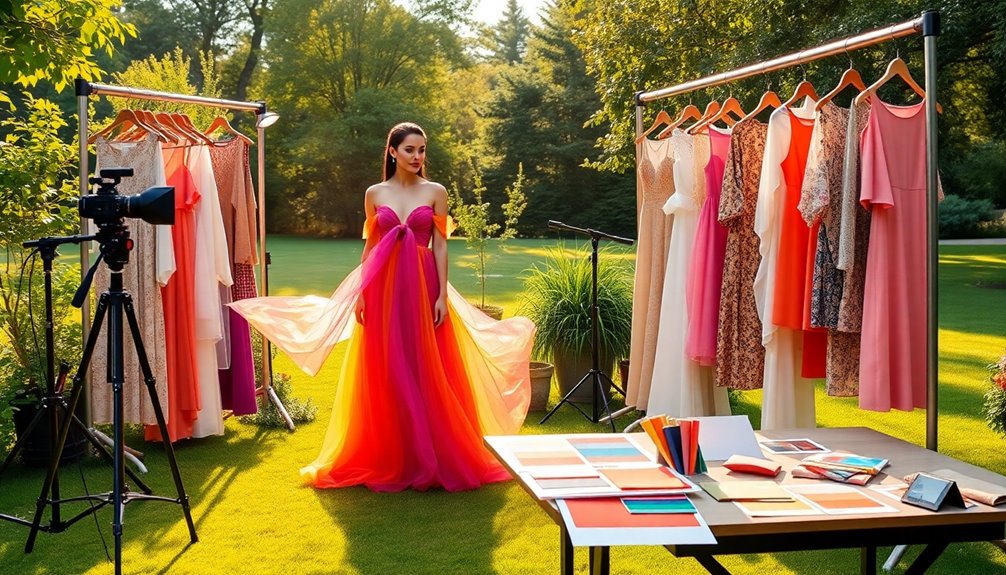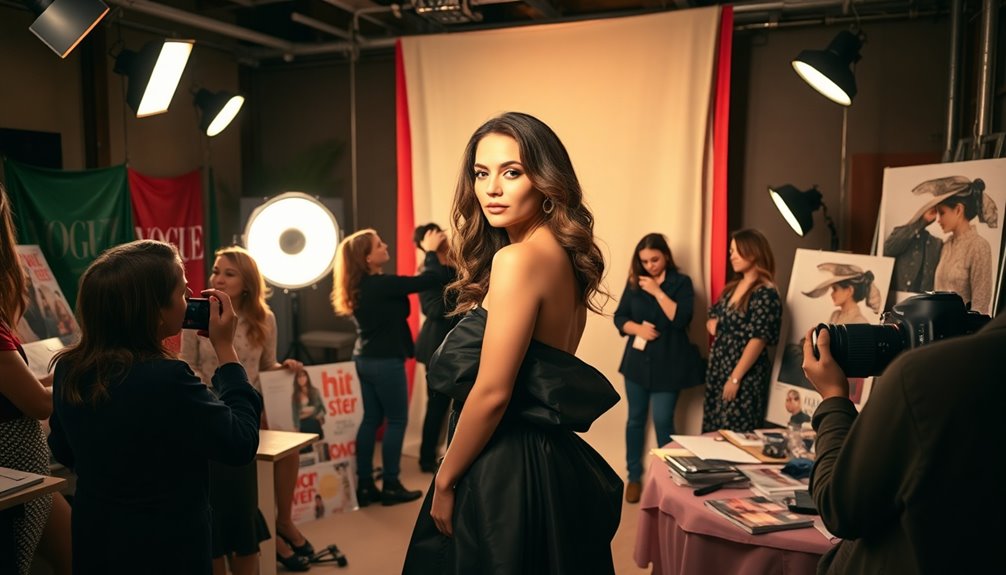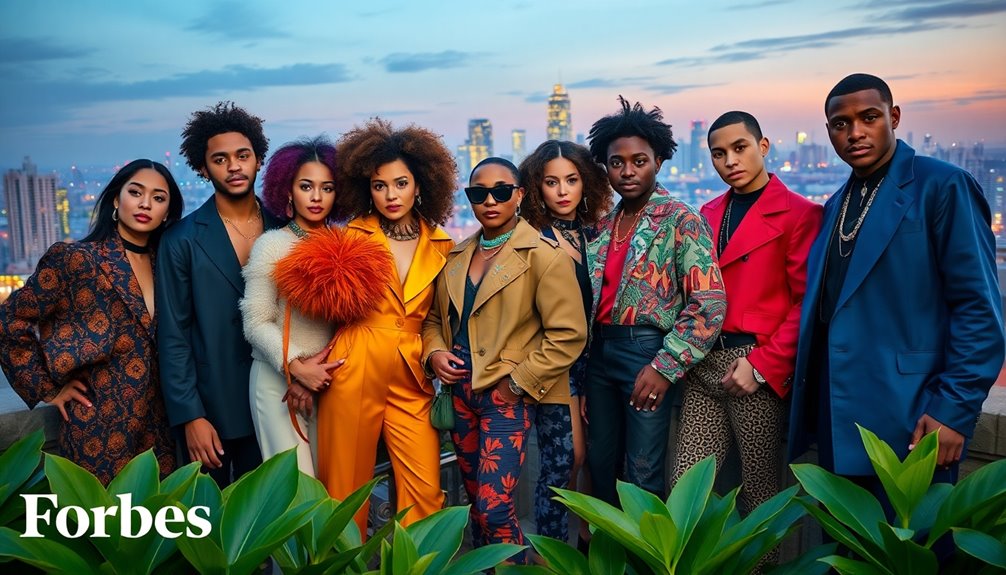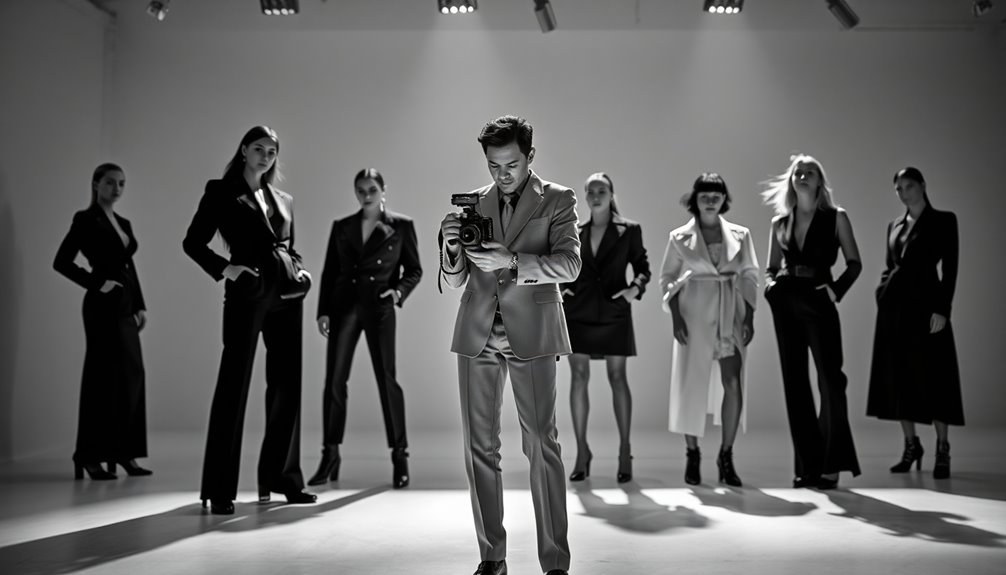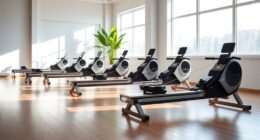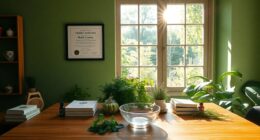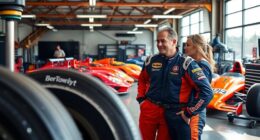To organize a photoshoot for your fashion portfolio, start by defining a clear concept and theme that aligns with your vision. Set a budget to manage costs for the photographer, models, and logistics. Assemble a creative team, including stylists and makeup artists, and communicate expectations effectively. Choose a location that enhances your theme, and prepare outfits to fit the narrative. Schedule the shoot for a time that works for everyone, and have a detailed plan for the day. Finally, review your shots afterward to ensure they meet your goals. There's plenty more to explore on making your photoshoot a success.
Key Takeaways
- Define a unique theme and vision for the photoshoot, creating a mood board to visualize ideas and ensure team alignment.
- Establish a budget that includes costs for hiring talent, locations, equipment, and post-production to avoid overspending.
- Assemble a skilled team, clearly communicating roles and expectations through meetings and shared materials to foster collaboration.
- Choose locations and props that enhance the theme, organizing wardrobe and outfits in shooting order for efficiency on the day of the shoot.
- Create a detailed schedule for the shoot day, including setup and breakdown, and conduct a debrief afterward for feedback and improvements.
Concept and Story Creation
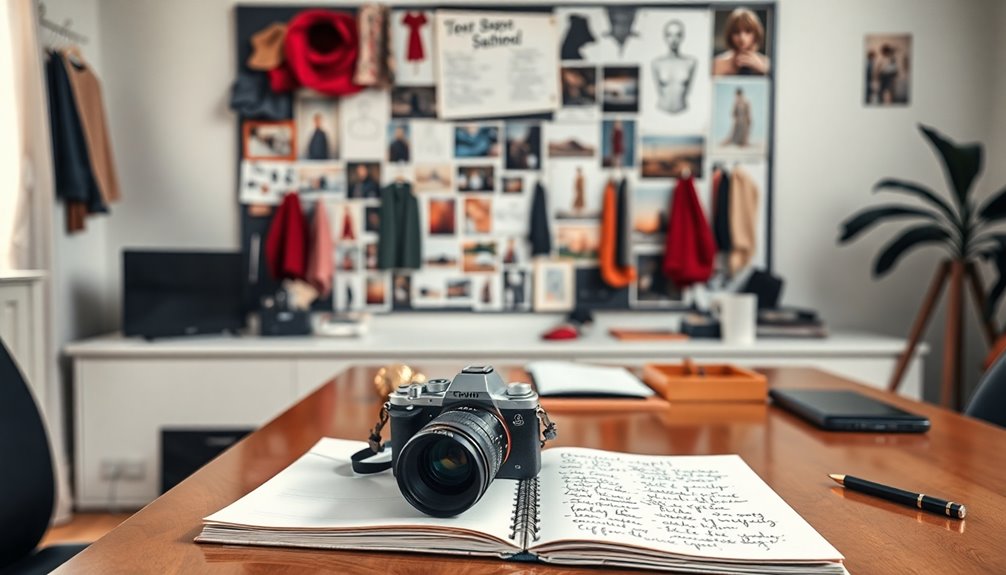
When organizing a photoshoot for your fashion portfolio, the first step is to nail down a compelling concept and story. Start by defining your overall vision and theme; the more unique, the better. Research various themes, fashion trends, and styles that resonate with your target audience and the purpose of your shoot. This will help you craft a concept that stands out in a crowded market.
Next, determine the narrative you want to convey through your images. Create a mood board to visualize your ideas, including poses, color palettes, hairstyles, and outfits. Consider how props and accessories can enhance your story and select a setting that complements your theme.
Decide on the specific style and aesthetic you want to achieve, choosing clothing and accessories that align with your concept. Don't forget about hair and makeup—these elements should enhance the overall vision. A strong editorial presence in your portfolio can significantly attract potential clients and enhance your professional reputation.
Finally, share your concept and mood board with your creative team to ensure everyone understands their roles. Encourage collaboration and feedback, and keep communication open during the shoot to ensure your vision comes to life seamlessly.
Budgeting and Resource Allocation
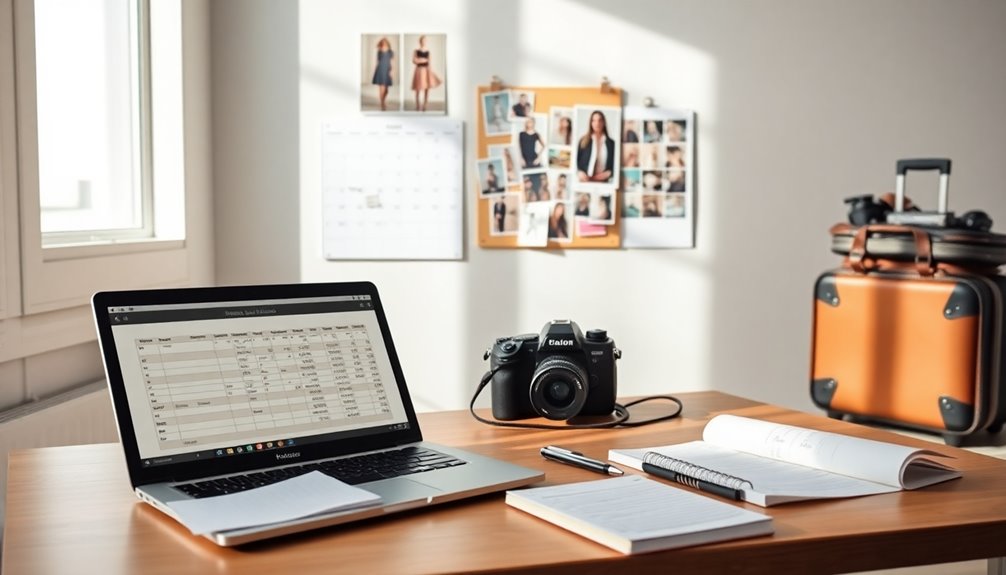
After solidifying your concept and story, the next step is to establish a budget and allocate resources effectively. Start by determining your overall budget to avoid overspending. Factor in costs for materials, equipment, and services for the shoot. Hiring a photographer can range from $1,000 to $5,000 or more per day, so choose wisely.
Don't forget to include post-production fees for editing and retouching, as well as any usage licensing fees. Additionally, consider integrating your budget with state-specific benefits that may enhance your overall financial strategy.
When it comes to models, hire professionals that fit your vision, but be prepared to pay a few hundred to several thousand dollars depending on their experience. Pre-fit clothing to prevent last-minute issues, and communicate with models beforehand about different looks. Additionally, consider diversification of retirement portfolio when planning your financial investment in the photoshoot, as it can help mitigate risks.
Hair and makeup artists are essential, with fees ranging from $200 to $1,000 or more, along with stylist fees that can start at $500. In addition, consider potential hidden costs that may arise during the process to ensure you're fully prepared.
Choose a location or studio that aligns with your budget. Scout locations in advance to ensure they meet your shoot's requirements.
Lastly, plan for logistics such as lighting gear, snacks, and necessary tools like clothing racks and irons to keep everything running smoothly.
Team Assembly
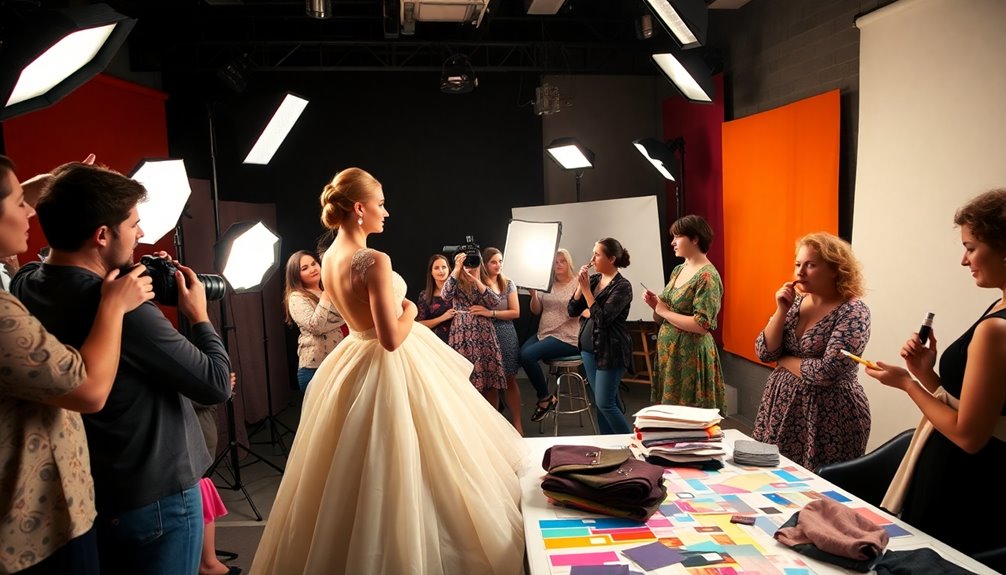
Assembling a talented team is crucial for a successful fashion photoshoot. Start by identifying the key members you'll need: a skilled photographer to capture stunning images, models who fit your concept and style, wardrobe stylists to curate outfits that resonate with your theme, and makeup artists and hairstylists to enhance your models' looks.
Don't forget a prop stylist to ensure any objects in the shoot are presented beautifully. Skilled professionals enhance overall shoot quality, which is essential for achieving the desired results.
To find the right talent, explore modeling agencies, online platforms like Model Mayhem, and social media sites such as Instagram. Networking through professional circles and beauty colleges can also yield emerging talent at budget-friendly rates.
Once you've assembled your team, communicate your expectations clearly. Hold pre-shoot meetings to align everyone on the vision, share mood boards, and distribute shot lists and call sheets.
An open dialogue throughout the process fosters collaboration and keeps everyone on track.
Finally, maintain team synergy by ensuring everyone understands their roles and responsibilities. Foster a positive environment that encourages feedback, and nurture the relationships you build for future projects.
Location and Props

With your team in place, the next step is selecting the perfect location and props to elevate your fashion photoshoot.
Consider a rooftop for stunning cityscape backgrounds and dynamic shots with natural light. If you're aiming for a serene vibe, a poolside setting offers a calming atmosphere and beautiful blue contrasts, perfect for summer fashion.
Alternatively, a bridge can provide a unique urban backdrop with excellent color contrast, while a dockyard can add vintage charm with its rustic elements. If you prefer a more personal touch, shooting at home or in an office can create familiar, versatile settings without extra costs. Locations significantly influence photo themes, enhancing overall aesthetics and fostering creativity in your shoot. Incorporating historical farmhouses as a backdrop can add unique architectural significance to your portfolio.
When it comes to props, vintage furniture can inject character and nostalgia into your images. Mirrors and reflective surfaces can enhance your shots by adding depth and drama.
Additionally, using various fabrics and textiles allows you to create interesting textures and effects, whether draped over models or as backdrops.
Ultimately, the right combination of location and props will set the tone for your photoshoot, making your fashion portfolio truly stand out.
Scheduling and Logistics
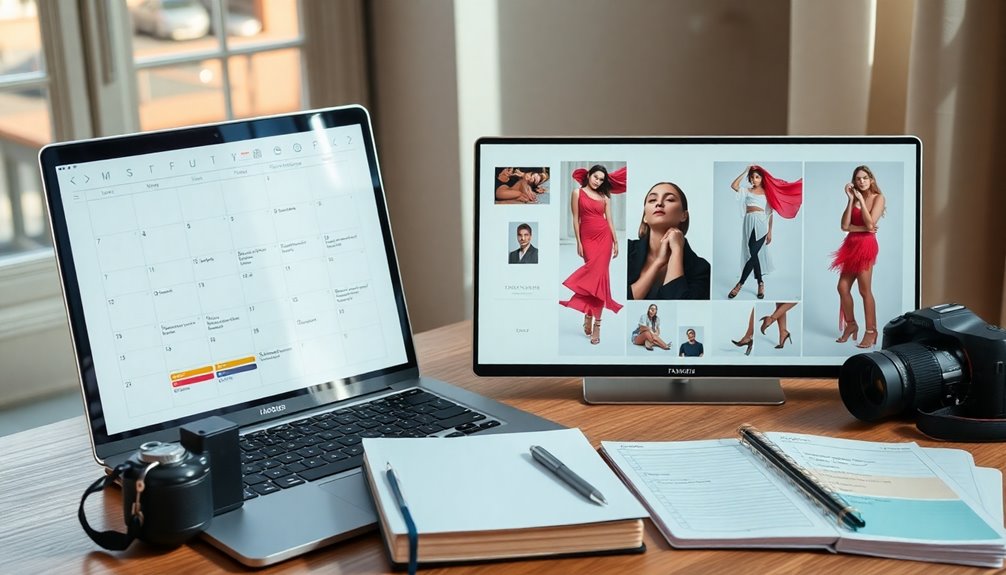
When planning a photoshoot, effective scheduling and logistics are crucial to ensure everything runs smoothly. Start by determining a date and time that works for everyone involved, including models, stylists, and the photographer. Aim for time slots between 9 am to 1 pm or 2 pm to 6 pm, avoiding major mealtimes. Make sure the date allows ample time for preparation and send out a tentative date to model agencies for confirmations.
Next, coordinate with your team. Organize a meeting to discuss logistics and concepts, ensuring all members understand their roles and responsibilities. Confirm the attendance of the photographer, stylists, and makeup artists, and finalize the shot list together. Collaboration and shared effort during this phase help to align everyone's vision.
Create a detailed timeline for the shoot day, including setup, shooting, and breakdown. Allocate specific times for each look or shot while allowing breaks to keep everyone energized.
Lastly, manage logistical details by arranging necessary equipment, transportation, and food. Prepare for unforeseen circumstances, such as weather changes, by having a backup plan in place. With careful scheduling and logistics, you'll set a solid foundation for a successful photoshoot.
Preparation and Execution
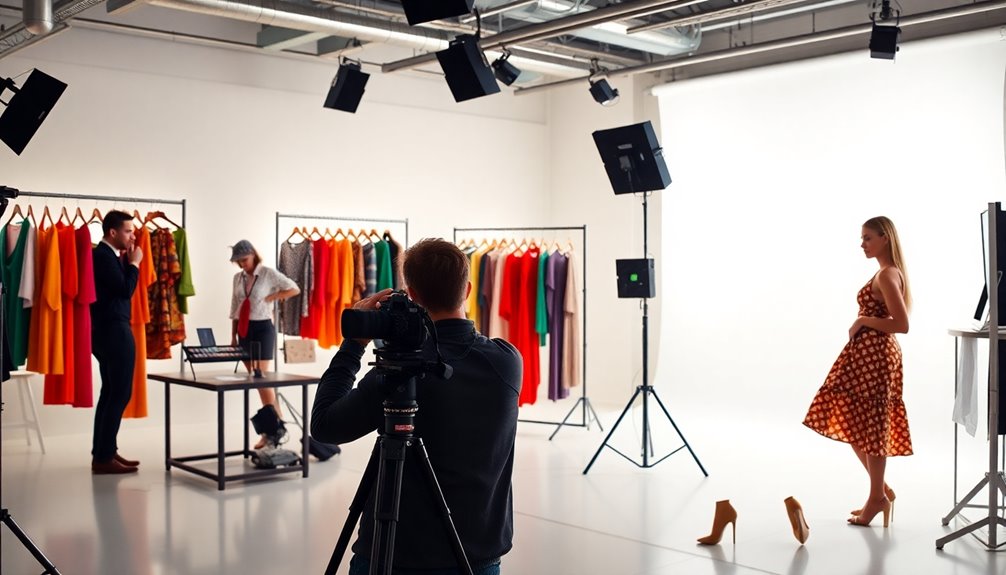
Before diving into the photoshoot, thorough preparation is essential for a seamless execution. Start by crafting a detailed mood board that visually represents your concepts, including location, model posing, wardrobe, and colors. Use platforms like Pinterest and fashiongonerogue. com for inspiration, and don’t forget to have backup ideas ready in case your first choice doesn’t pan out. Additionally, involving your team in the creation of the mood board can enhance collaboration and align everyone’s vision. When selecting wardrobe pieces, pay attention to the textures, shapes, and materials that will complement the overall theme of the shoot. It’s also important to consider the lighting and background that will best showcase the clothing. These fashion mood board tips will ensure that your vision is cohesive and well-executed on the day of the photoshoot.
Next, define the theme of your shoot—whether it's retro or bohemian—and ensure every element aligns with this narrative. Assemble your team, selecting models and professionals who resonate with your vision. Thoroughly scout locations, considering both aesthetics and practicalities like weather contingencies.
When handling wardrobe, request clothing loans ahead of time and pre-fit outfits to ensure perfect fits. Lay out outfits in shooting order, keeping in mind hair and makeup changes.
Arrive early on the shoot day to set up and introduce your team. Start with lighter makeup and progressively move to heavier styles, fostering open communication about expectations.
Finally, use a shot list to streamline the process, maximizing your time and ensuring you capture all necessary shots.
Frequently Asked Questions
How Do I Choose the Right Models for My Photoshoot?
To choose the right models for your photoshoot, start by defining the project's vision and the type of image you want to portray.
Evaluate models' physical attributes and personalities to ensure they align with your aesthetic.
Review their portfolios for versatility and past work that matches your style.
Conduct auditions to see how they take direction and express confidence.
Finally, communicate clearly with agencies to find models who fit your project's needs.
What Should I Include in a Call Sheet?
When creating a call sheet, you should include essential details like the project name, production location, and date.
List crew and model call times, along with shooting schedules.
Don't forget to add contact information for key personnel and any special transportation arrangements.
Include weather forecasts and department-specific notes, such as equipment lists and makeup call times.
This ensures everyone knows their roles and the day runs smoothly.
How Can I Ensure My Vision Is Communicated Effectively?
To ensure your vision's communicated effectively, start by creating mood boards and inspiration images that visually convey your ideas.
Use a clear brief outlining your goals and provide specific directions to your team. Engage in both verbal and non-verbal communication, offering constructive feedback throughout the process.
Conduct pre-consultations to align expectations and encourage team input. This collaborative approach helps everyone understand the vision, making the photoshoot more cohesive and successful.
What Types of Permits Might I Need for a Location?
When planning a photoshoot at a public location, you'll likely need various permits.
If you're shooting commercially, a commercial shoot permit is essential, especially if you're using equipment like tripods or generators.
For parks, you should apply well in advance, often about 21 business days.
Also, be prepared to submit a detailed application, including sketches and insurance certificates.
Always check local regulations to ensure compliance and avoid any last-minute issues.
How Do I Handle Last-Minute Changes on the Shoot Day?
Handling last-minute changes on shoot day requires flexibility and quick thinking. Stay calm and communicate openly with your team about any adjustments needed.
If weather or location issues arise, have backup plans ready. Make sure to adapt your shot list as necessary and keep essential equipment handy for various scenarios.
Maintain a positive attitude, and encourage your team to do the same—this will help everyone stay focused and productive despite unexpected challenges.
Conclusion
By following these steps, you're well on your way to organizing a successful photoshoot for your fashion portfolio. Remember to stay flexible and adapt as needed, since creativity often thrives in unexpected situations. With a solid concept, a great team, and careful planning, you'll capture stunning images that reflect your unique style. Now, get out there and make your vision come to life—your portfolio deserves it!
